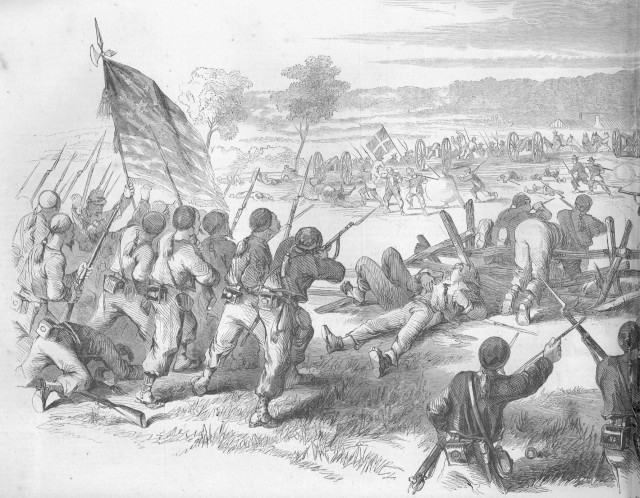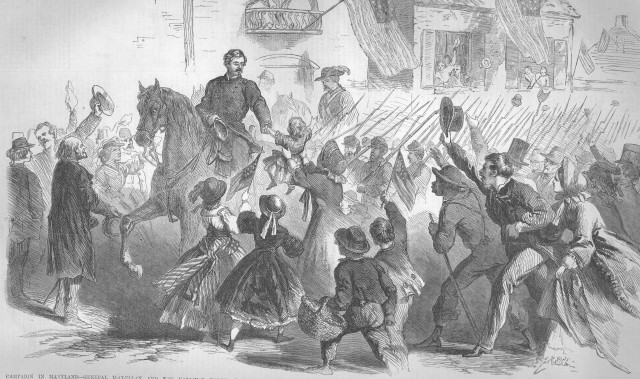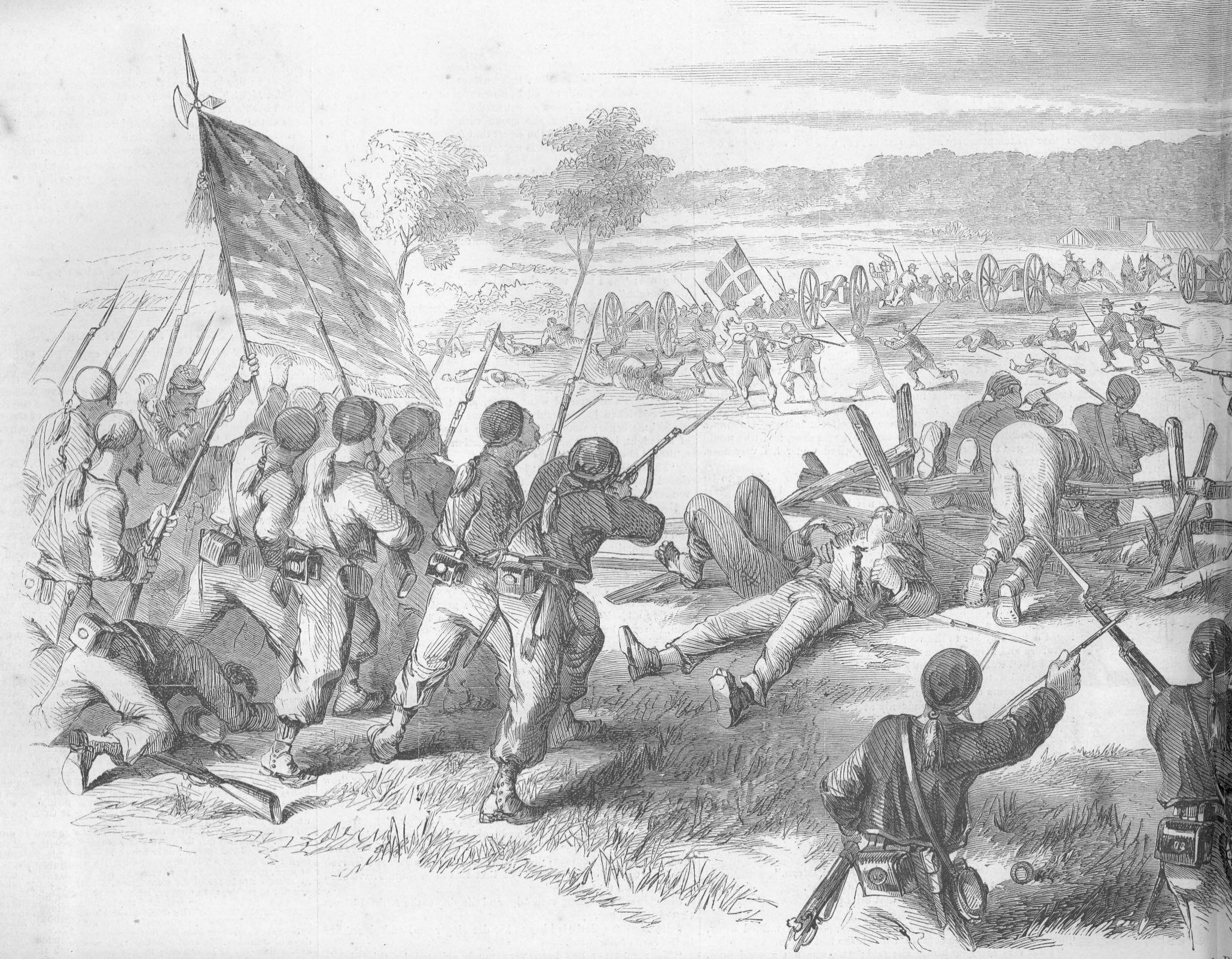Great issues were at stake as the tired, ragged soldiers in Robert E. Lee's Army of Northern Virginia began wading across the Potomac River into Maryland at a ford thirty miles northwest of Washington on September 4, 1862. During the past two months this army had marched 200 miles and fought several victorious but costly battles against two different Union armies commanded by George B. McClellan and John Pope.
Each side, Confederate and Union, had suffered more than 30,000 casualties in these battles, and the Army of Northern Virginia was in poor shape to launch an invasion into Union-held territory. But Lee wanted to keep up the momentum achieved in the Second Battle of Manassas on August 29-30. He told Confederate President Jefferson Davis that another Confederate victory would so demoralize the Northern people that they would register an anti-war vote in the forthcoming Union congressional elections, thereby crippling Abraham Lincoln's ability to continue waging war. Confederate leaders were aware that Britain and France stood poised to recognize the Confederacy if Lee's invasion was successful. Southerners believed that the border slave states of Maryland and Kentucky were eager to join the Confederacy, and another Southern army was invading Kentucky at the same time Lee entered Maryland in a dual effort to make this happen.
Lee was right about Northern demoralization with what seemed to be a failed war. The Union Army of the Potomac was also on the verge of demoralization. Recognizing this danger, Lincoln defied the advice of his Cabinet and not only kept McClellan in command of the Army of the Potomac but also ordered him to merge John Pope's former Army of Virginia into it, to seek battle with the invading enemy, and to "destroy the rebel army, if possible." McClellan swiftly reorganized the army and revived its morale, but he then reverted to his wonted caution as he probed tentatively toward the Army of Northern Virginia, then occupying Frederick, Maryland.
On September 13 McClellan had a stroke of luck such as few generals in history have ever enjoyed. An Indiana corporal found in a field near Frederick a copy of Lee's Special Orders No. 191 wrapped around three cigars, lost four days earlier by a careless Southern courier. These orders divided the Army of Northern Virginia into five parts, leaving only one-third of it to defend the South Mountain gaps while the other two-thirds under General Thomas ("Stonewall") Jackson converged in three columns to capture the Union garrison at Harpers Ferry, which stood athwart Lee's supply line from the Shenandoah Valley. If McClellan, with the advantage gained from reading Lee's orders, had moved quickly, he might have broken through the gaps and defeated the Army of Northern Virginia in detail before it could re-unite. He did not move quickly enough, however. Union attackers broke through the gaps after daylong battles on September 14, but not soon enough to prevent Jackson's capture of Harpers Ferry and its 12,000 defenders on the 15th, or to prevent the concentration of most of Lee's troops at Sharpsburg on the 16th and 17th. There Lee, despite having his back to the Potomac with only a single ford for retreat, decided to make a stand.
The exhausted Army of Northern Virginia had been leaking stragglers since the beginning of the invasion, and Lee was able to bring only 37,000 men onto the firing line on September 17, while McClellan had 80,000 soldiers in his army. As usual, however, McClellan's fears multiplied the enemy by a factor of three and made him think that he faced 110,000 Confederates. Thus while the Army of the Potomac attacked in several waves during that bloodiest single day in American history (23,000 casualties on both sides, of whom 6,000 were killed or mortally wounded), McClellan missed two chances to exploit potential breakthroughs to cut off the Confederate retreat. He would not send in his ample reserves because he feared Lee's phantom reserves that existed only in McClellan's mind. Never did more than 15,000 Union soldiers go into action simultaneously on this day, enabling Lee to shift troops from quiet to threatened sectors of the battlefield. At least 20,000 Northern soldiers never got into action at all.
No breakthrough occurred, and on the night of September 18-19 Lee retreated to Virginia without further damage. The Battle of Antietam was a Union victory, but a limited and incomplete one that disappointed Lincoln. Nevertheless, the hoped-for political and diplomatic consequences of the Confederate invasion did not happen, and the war continued until ultimate Confederate defeat.
Editor's Note: Our guest contributor, Dr. James McPherson is a professor at Princeton University, and is recognized as one of the most distinguished historians of our time.
Related Links:
USAMHI Bibliography : ANTIETAM CAMPAIGN (SEP 1862)
USAMHI Bibliography: George B McClellan






















Social Sharing